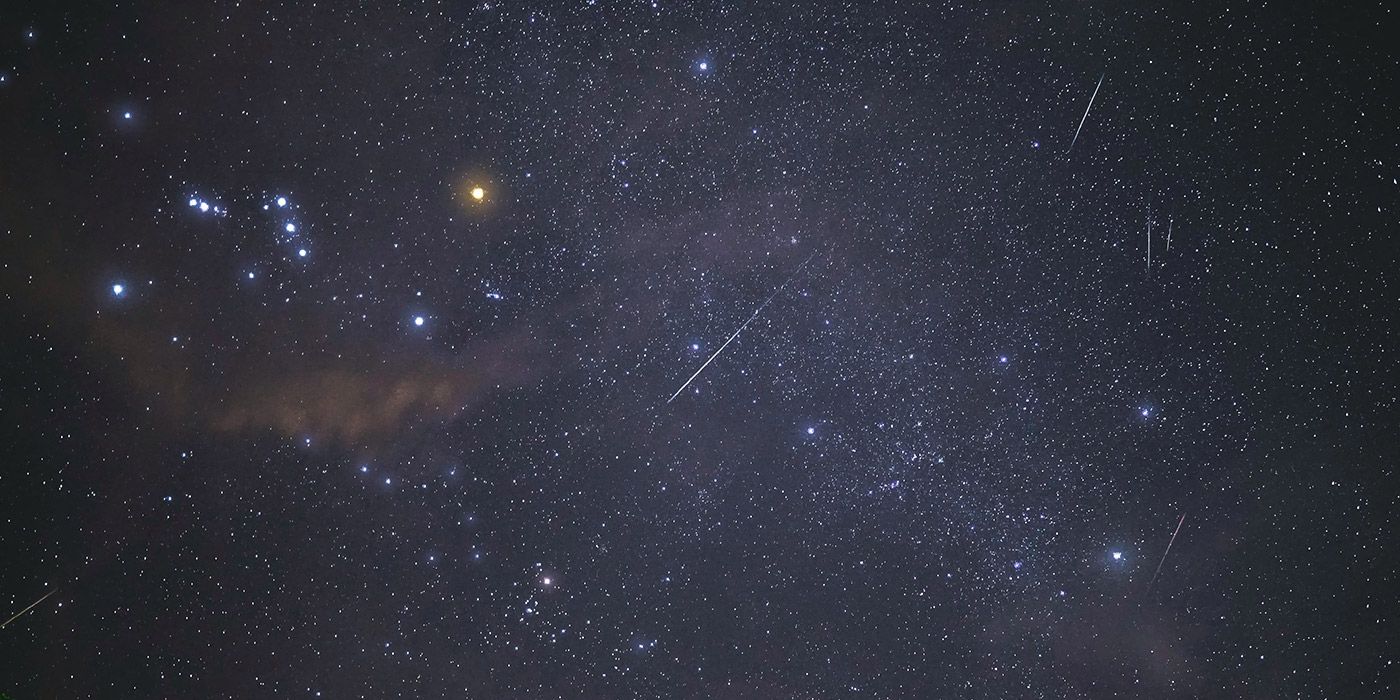
Wednesday evening and Thursday morning (Dec. 13-14) is the peak time for one of the best meteor showers of the year – the Geminids. The Moon is in its new phase on this Dec. 12, so it won’t interfere with viewing the shower.
While the best night is Dec. 13-14, there could be significantly more meteors in the sky than usual on the evenings and pre-dawn hours before and after too. Meteors or “shooting stars” (which have nothing to do with stars) are pieces of cosmic dust and dirt hitting the Earth’s atmosphere at high speed and making a flash of light. These flashes could happen anywhere in the sky, so it’s best to view the shower from a dark, wide-open place. See the list at the end for viewing suggestions.
The Geminid meteors are cosmic “debris” left over from a small, unusual, but regularly returning object, called Phaethon (pronounced Fay-uh-thon). It is a small, rocky chunk which orbits the Sun in 1.4 years (not too different from the Earth’s 1-year orbit.) During its travels, it gets close to the Sun, which heats it tremendously, loosening dirt and dust which it then leaves behind. It is this long and wide dirt and dust stream that our planet encounters every December.
Each flash you see is a bit of its material hitting the Earth’s atmosphere and getting heated up (and heating up the air around it) as it speeds through our thick atmosphere. Both the superheated dust and dirt and the heated air contribute to the visible light we observe. Astronomers don’t fully understand why Phaethon sheds so much material (when other rocky objects don’t); one idea is that it may be the survivor of a collision long ago.
ANDREW FRAKNOI’S EIGHT HINTS FOR “TAKING A METEOR SHOWER”
- Get away from city lights and find a location that’s relatively dark
- If it’s significantly foggy or cloudy, you’re out of luck
- The shooting stars can happen anywhere in the sky, so your location should allow you to see as much of the dome of the sky as possible
- Allow time for your eyes to get adapted to the dark (at least 10 -15 minutes)
- Don’t use a telescope or binoculars – they restrict your view and you want to see the whole sky. (This means that you don’t have to be part of the 1% with fancy equipment to see the shower; this is a show for the 99%!)
- Dress warm and in many layers – it gets cold at night when you stay out for a while
- Be patient (it’s not fireworks): keep looking up and around & you’ll see the faint flashes of light
- Take someone with you with whom you like to spend time in the dark!





